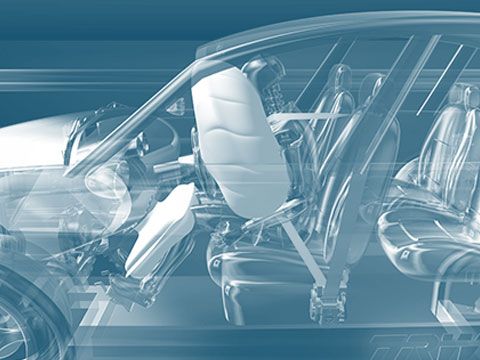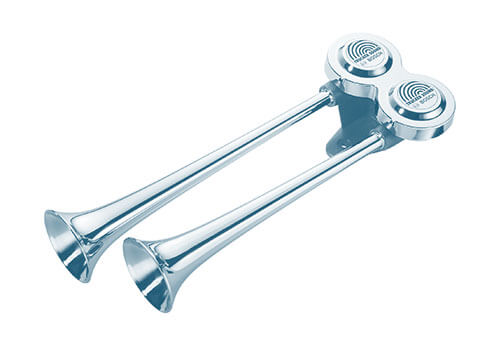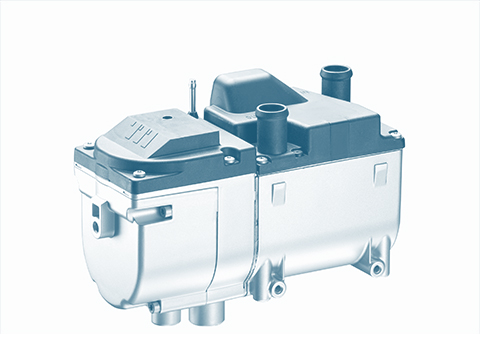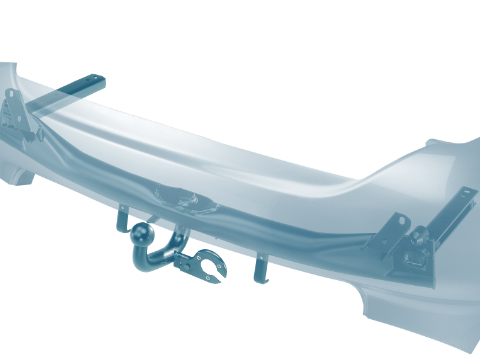Wiper blades
The wiper blades in a vehicle must meet the legal requirement for sufficient all-round vision at all times, thereby providing an assurance of road safety in the various situations drivers encounter...
Safety
The vehicle's wiper blades provide an assurance of good, glare-free visibility in all weather conditions. They thus improve road safety in all manner of driving situations, above all in rain, when snow is falling and in the dark.
Function
The wiper blades in a vehicle must meet the legal requirement for sufficient all-round vision at all times, thereby providing an assurance of road safety in the various situations drivers encounter. This means that wiper blades must meet the following requirements:

- They must clean rain, snow and dirt from the windscreen.
- The wiper range must be dimensioned sufficiently and meet legal requirements in order to ensure that the driver has a sufficient view of road signs and traffic lights extending to the edge of the road.
- The wiper quality must ensure that stray light from oncoming vehicles and the blinding effect associated with it are avoided as far as possible.
Jointless wiper blades
 The current development trend is indisputably towards jointless wiper blades. With jointless wiper blades, instead of the claws of the wiper blade clips, two pre-bent spring strips adapted specifically to the curve of the windscreen distribute the force to the rubber of the wiper blade. They ensure that the pressure exerted on the windscreen by the edges of the wipers is distributed even more evenly. This both minimises wear of the wiper edges and improves wiper quality. The omission of the clip system also means that joint wear no longer occurs and installation heights can be much lower. Furthermore, moving away from using a metal clip protects the wiper blade more effectively against icing up, making it ideal for use during the winter months. Many manufacturers supply a universal adapter for wiper blade attachment which is able to replace up to four different original adapters.
The most important element of a wiper blade is the wiper rubber. Its micro double edge, which makes contact with the windscreen, is just 0.01 to 0.015 mm wide. The wiper is designed so that all the way through the wiper range, the micro double edge is pulled across the windscreen at an angle of approximately 45°. Special wipers with a two-component synthetic wiper rubber have a particularly hard abrasion-resistant wiper edge which produces super-soft wiper movements. This softness ensures optimum movement and smooth running at any temperature.
The current development trend is indisputably towards jointless wiper blades. With jointless wiper blades, instead of the claws of the wiper blade clips, two pre-bent spring strips adapted specifically to the curve of the windscreen distribute the force to the rubber of the wiper blade. They ensure that the pressure exerted on the windscreen by the edges of the wipers is distributed even more evenly. This both minimises wear of the wiper edges and improves wiper quality. The omission of the clip system also means that joint wear no longer occurs and installation heights can be much lower. Furthermore, moving away from using a metal clip protects the wiper blade more effectively against icing up, making it ideal for use during the winter months. Many manufacturers supply a universal adapter for wiper blade attachment which is able to replace up to four different original adapters.
The most important element of a wiper blade is the wiper rubber. Its micro double edge, which makes contact with the windscreen, is just 0.01 to 0.015 mm wide. The wiper is designed so that all the way through the wiper range, the micro double edge is pulled across the windscreen at an angle of approximately 45°. Special wipers with a two-component synthetic wiper rubber have a particularly hard abrasion-resistant wiper edge which produces super-soft wiper movements. This softness ensures optimum movement and smooth running at any temperature.
Depreciation
On account of the high levels of stress and strain to which they are exposed, wiper blades are subject to natural wear. As a result, they must be replaced at regular intervals so that good visibility is assured in bad weather and when it is dark. Stripes and streaks on the windscreen or rubbing noises are signs of worn wiper blades. To avoid damage to wiper blades, drivers should not attempt to use them when windscreens are iced over.















